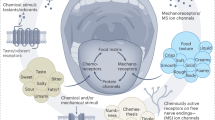Abstract
ALL the Merino wool imported from Australia and South Africa is characterised by a conspicuous waviness throughout the individual lock or staple (Fig. 1). When drawn out, each separate fibre exhibits a regular series of convexities and concavities, and it is the adjustment of these to one another which gives the waviness to the complete lock. They are permanent structural features, returning after the elastic fibre has been stretched. The degree of the waviness, whether close or open, shallow or deep, varies in individual fleeces, and affords a ready means by which the farmer and manufacturer estimate the fineness or coarseness of the wool, from which the ‘spinning count’ is largely determined.
This is a preview of subscription content, access via your institution
Access options
Subscribe to this journal
Receive 51 print issues and online access
$199.00 per year
only $3.90 per issue
Buy this article
- Purchase on Springer Link
- Instant access to full article PDF
Prices may be subject to local taxes which are calculated during checkout
Similar content being viewed by others
Author information
Authors and Affiliations
Rights and permissions
About this article
Cite this article
DUERDEN, J. Spirals and Waves in Wool. Nature 118, 153–154 (1926). https://doi.org/10.1038/118153a0
Issue Date:
DOI: https://doi.org/10.1038/118153a0
This article is cited by
-
Die Vererbung von Haar- und Hautmerkmalen, ausschließlich Färbung und Zeichnung. II
Zeitschrift für Induktive Abstammungs- und Vererbungslehre (1929)
Comments
By submitting a comment you agree to abide by our Terms and Community Guidelines. If you find something abusive or that does not comply with our terms or guidelines please flag it as inappropriate.



